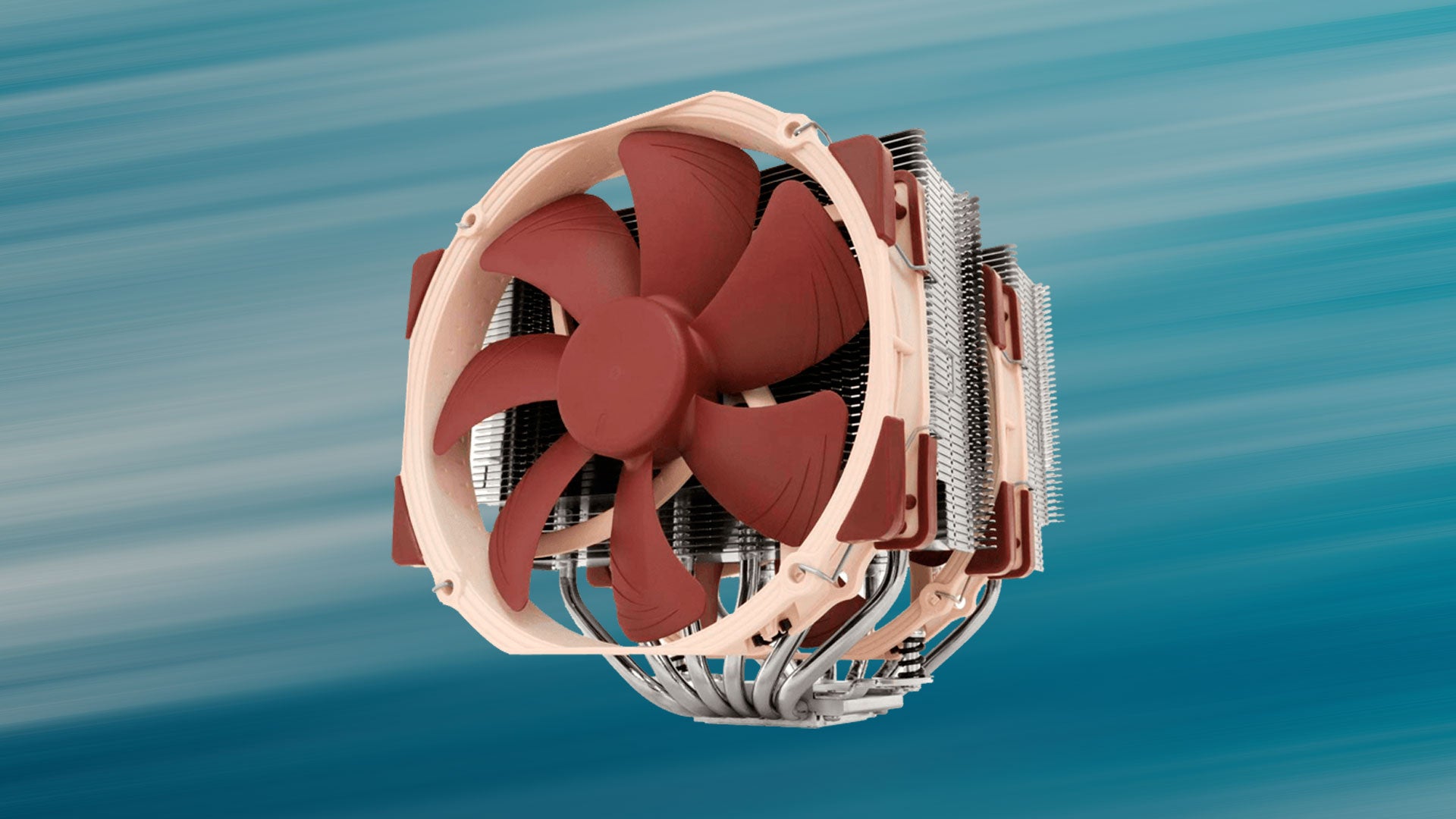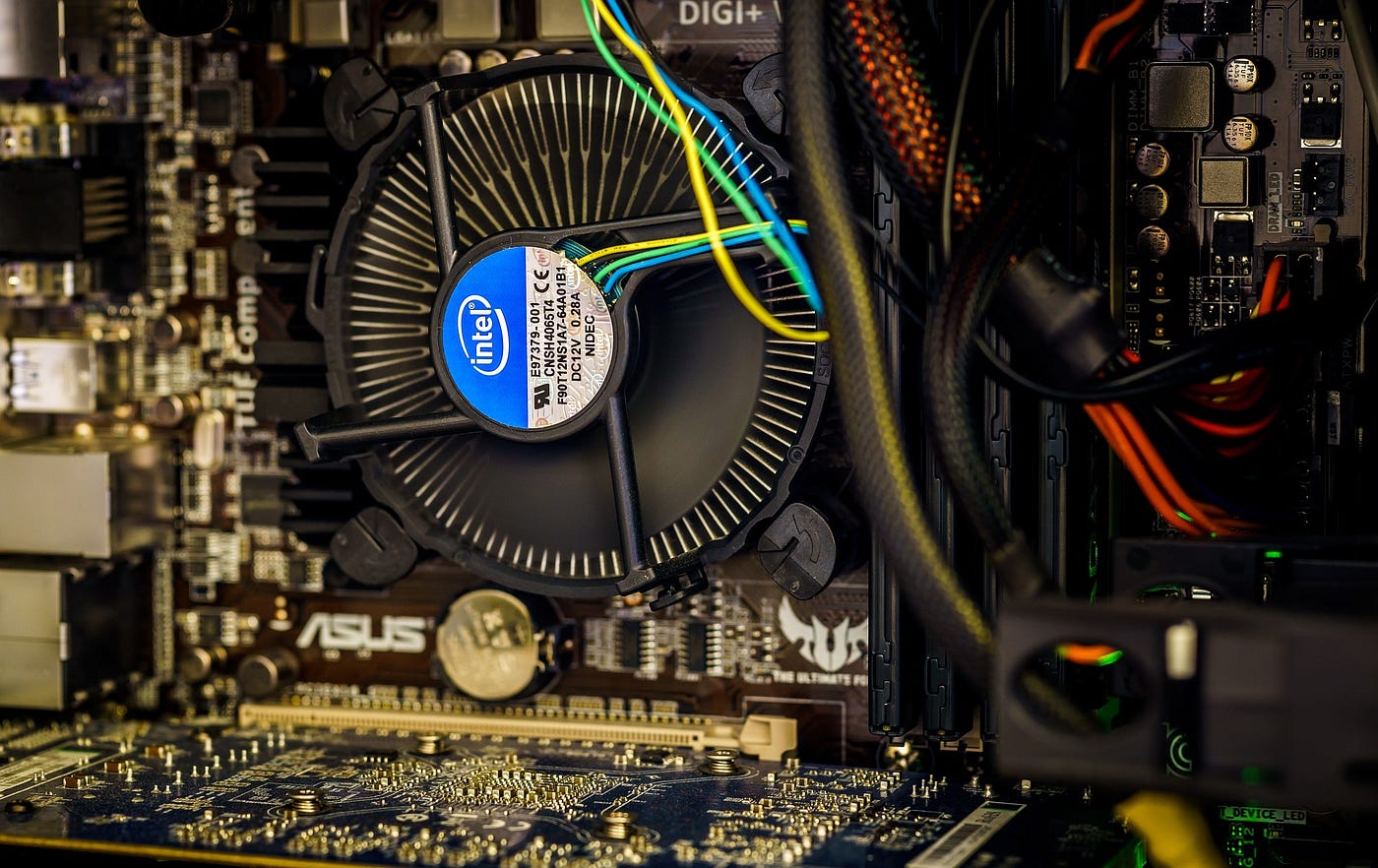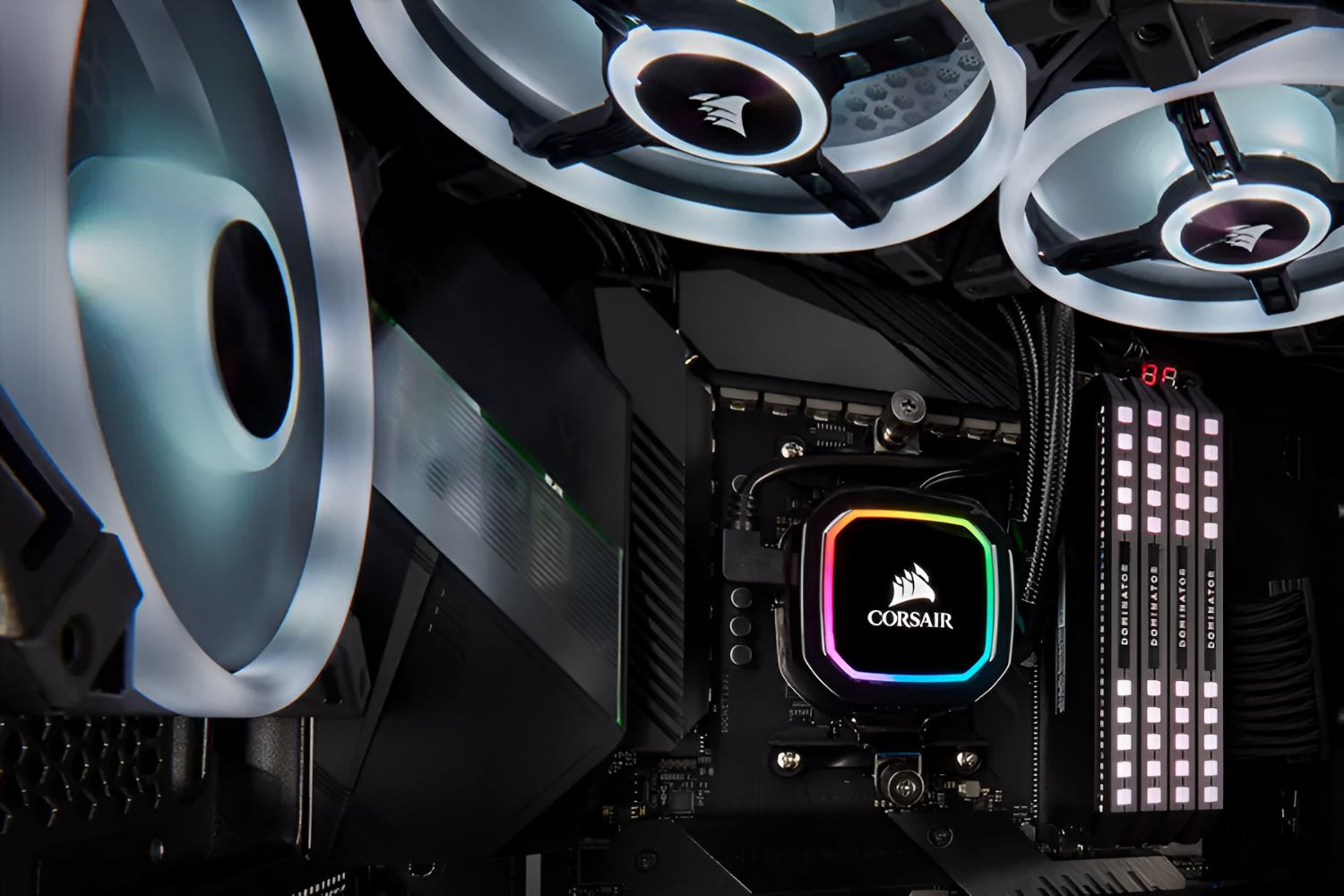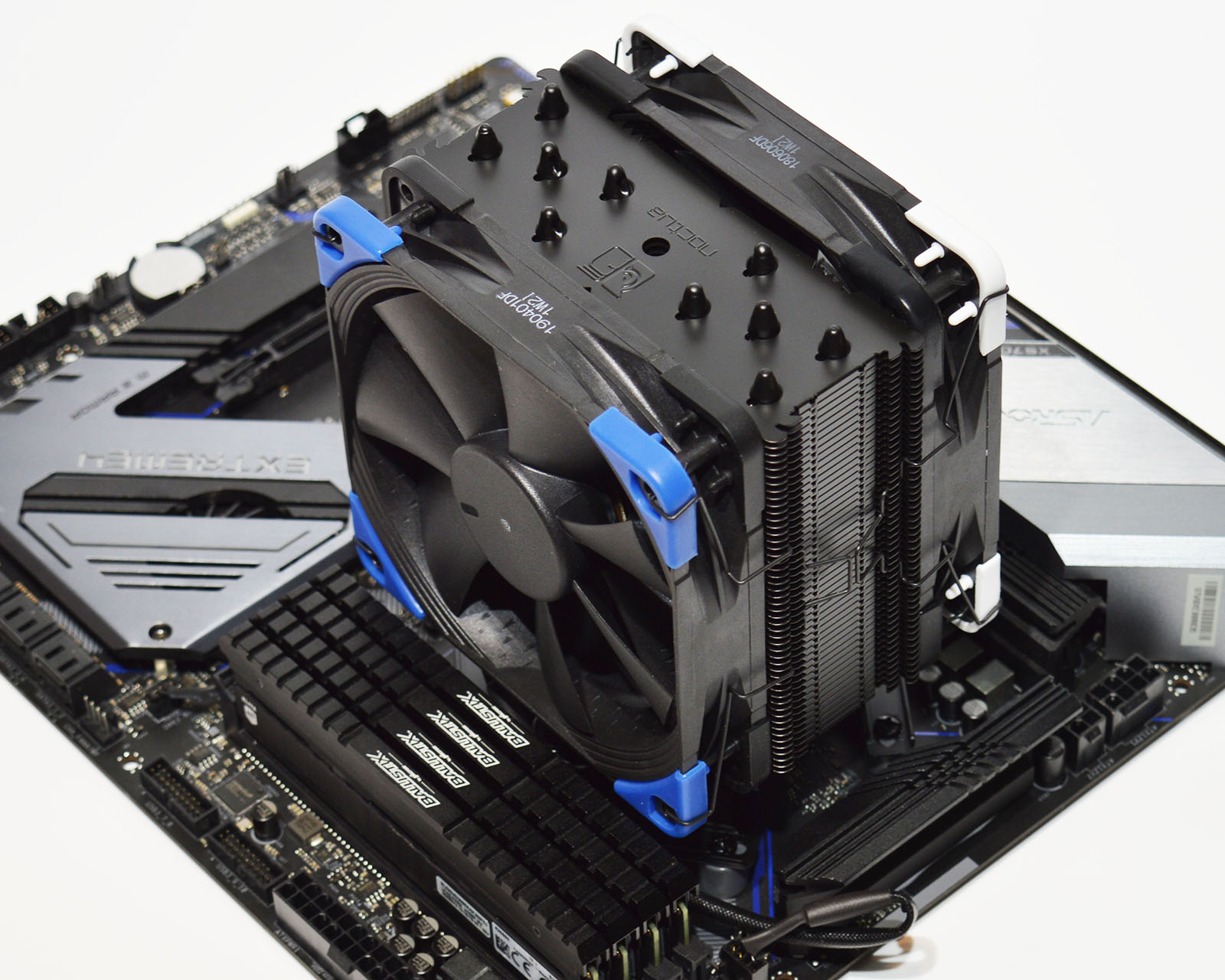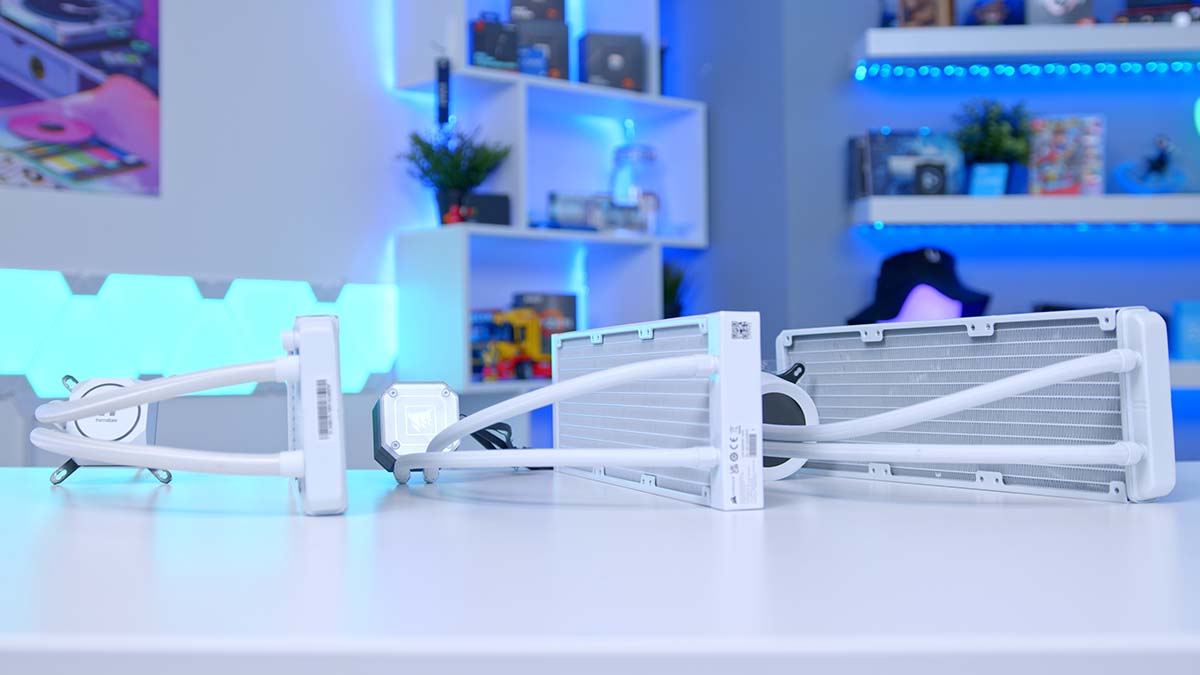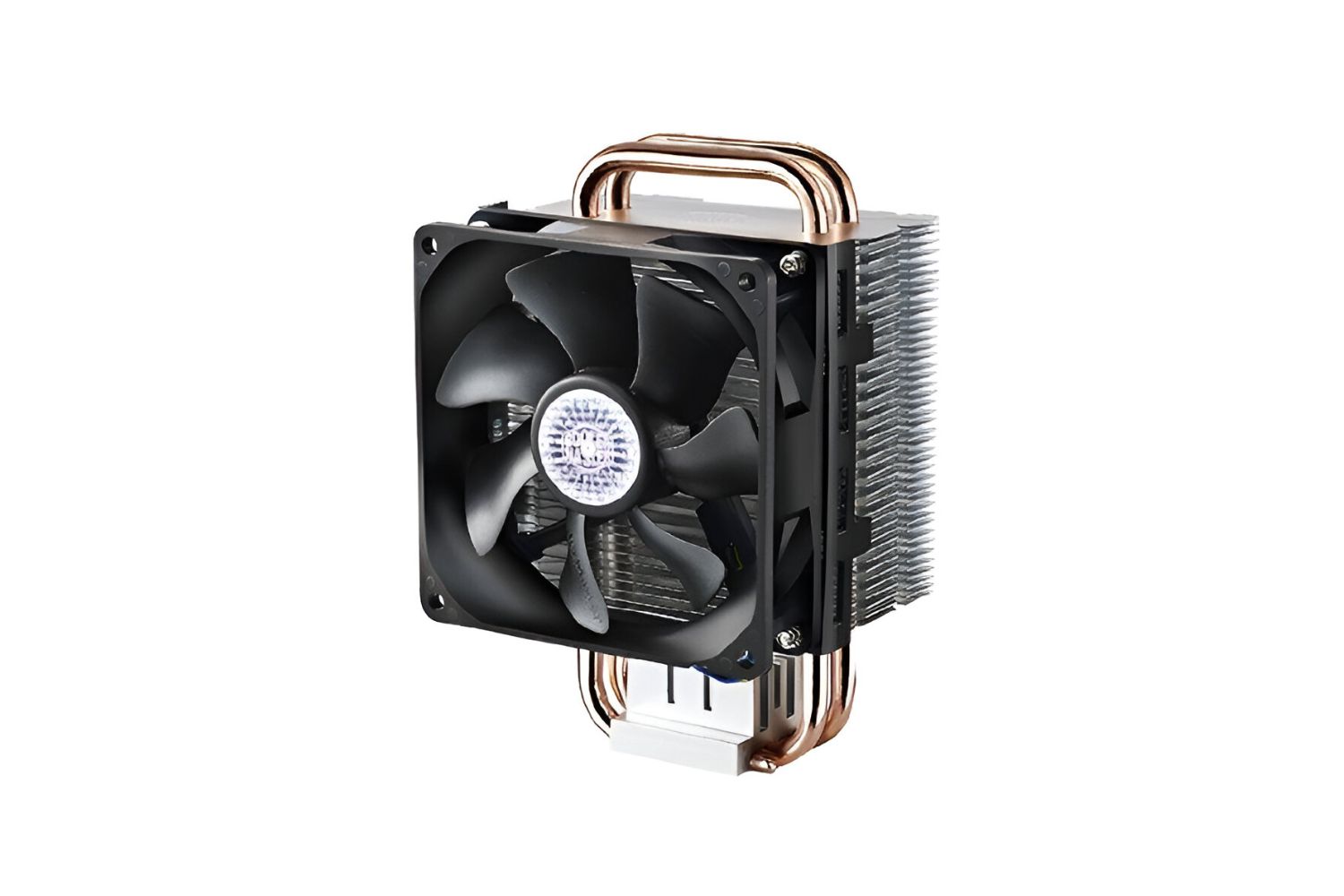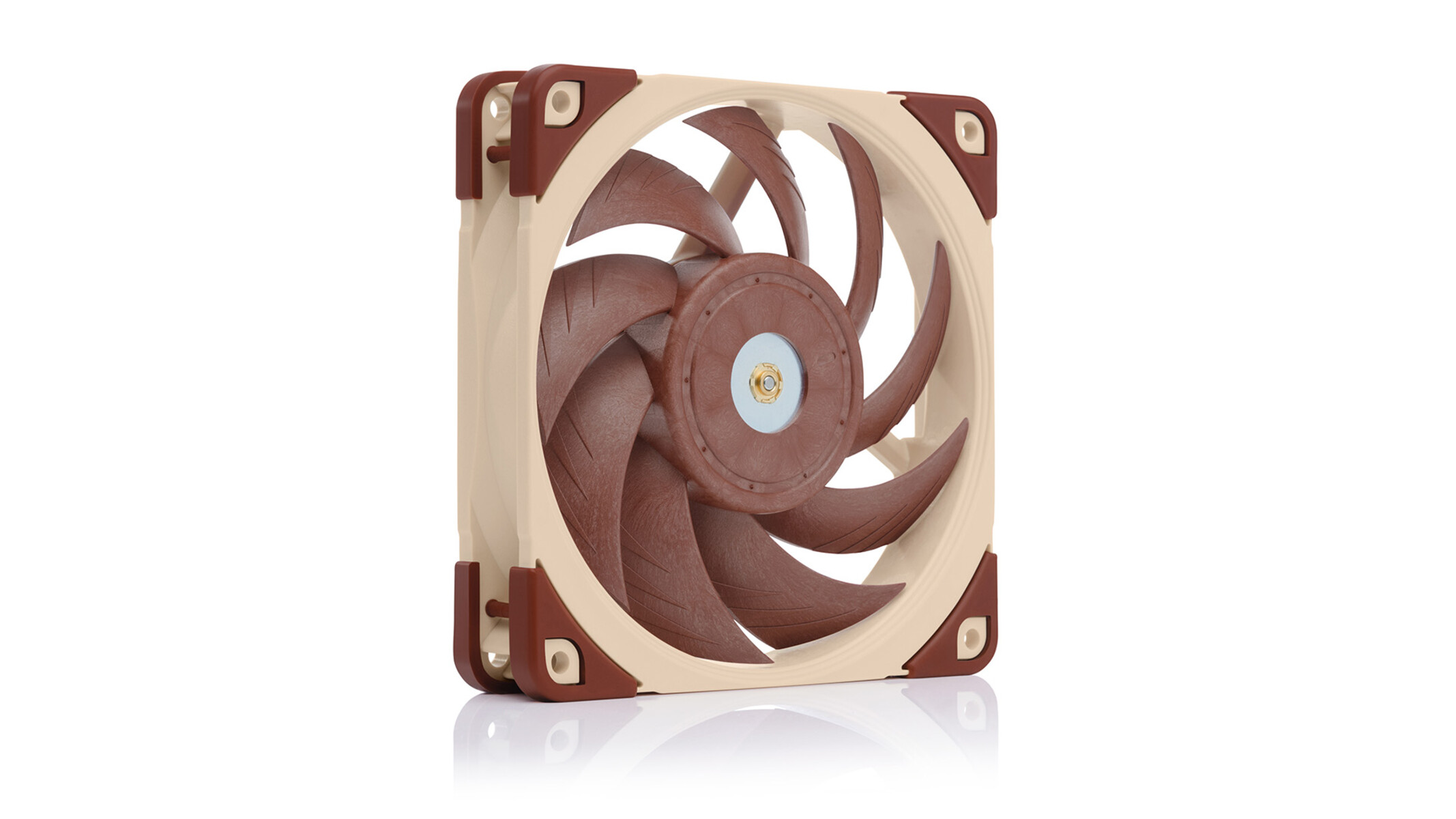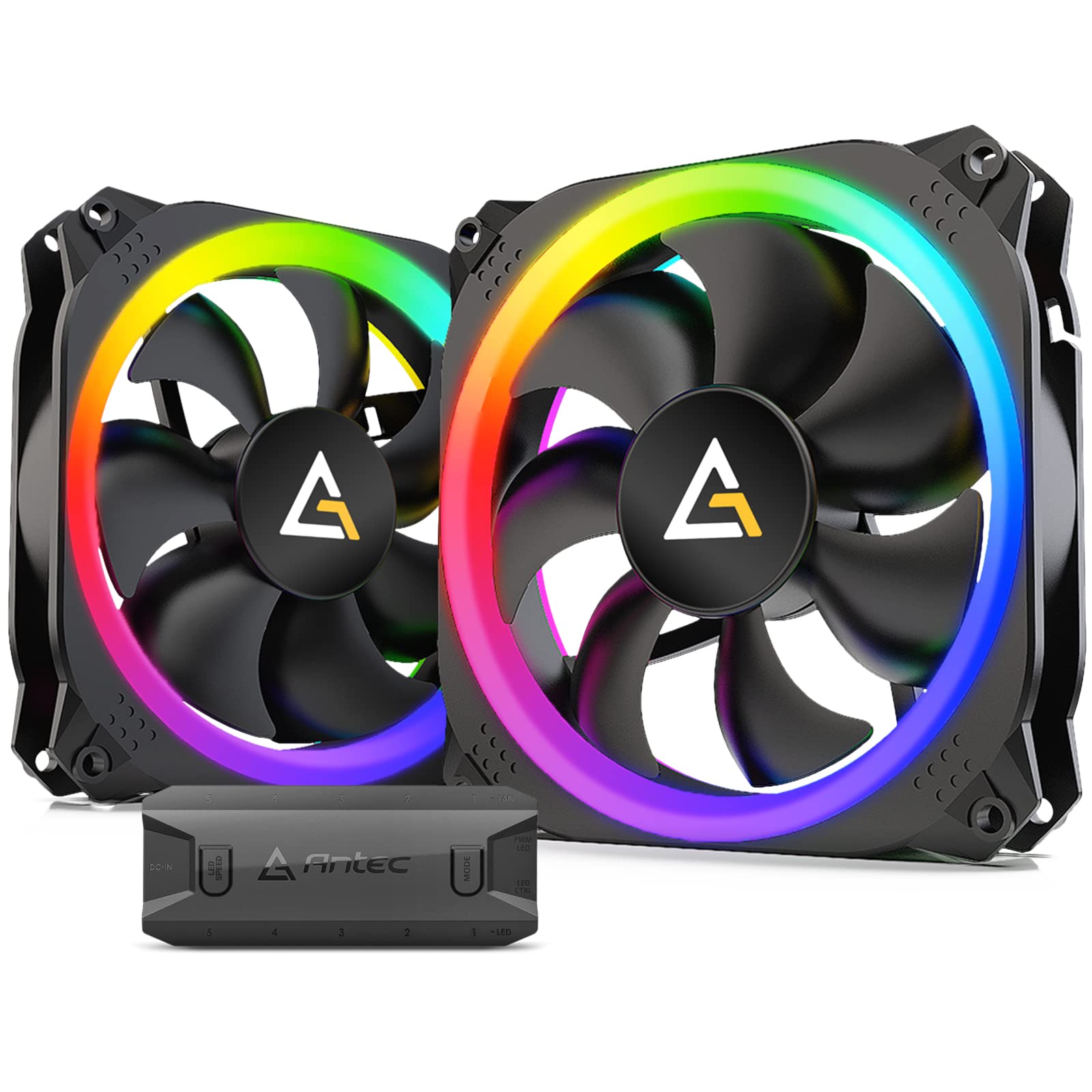Introduction
When it comes to building a high-performance computer, one crucial component that often gets overlooked is the CPU cooler. While most people focus on the latest processors and graphics cards, the importance of a good CPU cooler cannot be understated. But what exactly is dBA, and why is it essential in choosing a CPU cooler?
dBA, or decibel level, is a unit used to measure sound intensity. In the context of CPU coolers, it refers to the noise level produced by the cooling system. A quieter CPU cooler not only provides a more comfortable and enjoyable computing experience but also helps maintain the longevity and performance of the processor by keeping temperatures in check.
Understandably, noise is a significant concern for many PC enthusiasts and professionals alike. No one wants their computer to sound like a jet engine taking off, especially during intense gaming sessions or while working in a quiet environment. That’s where a good CPU cooler comes into play.
There are several factors that can influence the noise level produced by a CPU cooler. The type of cooling solution, fan design, quality of materials, and overall build quality all contribute to the overall acoustic performance. A high-quality CPU cooler will effectively and efficiently dissipate heat while producing minimal noise.
When it comes to noise levels, there is no perfect decibel range that applies to all situations. The ideal noise level for a CPU cooler depends on personal preference, specific use case, and the overall noise environment. However, certain guidelines can help you choose a CPU cooler with an acceptable noise level that doesn’t compromise performance.
In this article, we will explore the recommended dBA range for CPU coolers and provide some tips on how to choose a CPU cooler that offers exceptional cooling performance while maintaining a low noise level. Whether you are a casual PC user or a hardcore gamer, understanding the importance of dBA in CPU coolers will help you make an informed decision when it comes to selecting the right cooling solution for your needs.
What is dBA?
dBA, short for A-weighted decibels, is a unit used to measure sound pressure level in relation to the human ear’s sensitivity to different frequencies. It provides a more accurate representation of the perceived loudness compared to a raw decibel measurement. The A-weighting system filters out low and high-frequency sounds that are less audible to humans, focusing on the mid-range frequencies between 500 and 10,000 Hz.
In the context of CPU coolers, dBA is used to measure the noise level produced by the cooling system. It indicates how loud or quiet the CPU cooler is during operation, helping users determine whether it will be suitable for their needs. A lower dBA value indicates a quieter cooler, while a higher dBA value suggests a noisier one.
It is important to note that the dBA measurement is not a linear scale. Each increase of 10 dBA represents a perceived doubling of loudness to the human ear. For example, a CPU cooler with a noise level of 30 dBA will sound twice as loud as one with a noise level of 20 dBA.
To measure the dBA rating of a CPU cooler, manufacturers use sound testing equipment placed at a specific distance from the cooler. This testing process involves running the cooler at different speeds and loads to simulate real-world usage scenarios. The resulting dBA value provides an indication of the noise level users can expect when using the cooler in their systems.
Understanding the dBA rating of a CPU cooler is crucial for individuals who prioritize a quiet computing environment. Whether you use your computer for gaming, content creation, or office tasks, a lower noise level can significantly enhance your overall experience. Not only does a quieter CPU cooler reduce distractions, but it also allows for more focused work, immersive gaming sessions, and even better audio quality if you’re using external speakers or headphones.
While a lower dBA rating is generally desirable, it is important to strike a balance between noise level and cooling efficiency. Cooling performance should not be compromised for the sake of silence. Fortunately, advancements in CPU cooler technology have made it possible to achieve excellent cooling efficiency with minimal noise.
In the next section, we will explore the importance of a good CPU cooler and why you should consider investing in one for your system.
Importance of a Good CPU Cooler
A CPU cooler plays a vital role in the overall performance and longevity of a computer system. It is responsible for keeping the processor cool and preventing it from overheating. Here are some key reasons why a good CPU cooler is essential:
Temperature Regulation: The primary function of a CPU cooler is to dissipate heat generated by the processor. When the CPU is under heavy load, it can generate a significant amount of heat, which, if not properly managed, can lead to performance issues, instability, and even permanent damage. A good CPU cooler ensures that the processor operates within safe temperature limits, allowing it to function optimally and maintain consistent performance.
Enhanced System Stability: Overheating can cause system instability, leading to frequent crashes, freezes, and loss of data. By efficiently cooling the CPU, a good CPU cooler helps maintain stable system operation, reducing the risk of unexpected shutdowns or system failures. This is particularly crucial for demanding tasks such as gaming, video editing, and 3D rendering, which put a heavy load on the CPU for extended periods of time.
Extended Component Lifespan: Excessive heat can significantly reduce the lifespan of computer components, including the CPU itself. Prolonged exposure to high temperatures can lead to accelerated wear and tear, thermal degradation, and even premature component failure. A good CPU cooler helps mitigate these risks by preventing the processor from reaching dangerous temperature thresholds, prolonging the lifespan of the entire system and reducing the need for costly repairs or component replacements.
Reduced Noise Levels: Some stock CPU coolers that come bundled with processors can be quite noisy. They often rely on small, high-speed fans that produce noticeable noise levels even in normal operating conditions. Upgrading to a good CPU cooler can significantly reduce the noise output, creating a more pleasant and quieter computing experience. This is particularly beneficial for individuals who value a silent or low-noise environment, such as content creators, professionals working from home, or those who enjoy immersive gaming sessions without distractions.
Overclocking Capability: Overclocking, the process of increasing a CPU’s clock speed for improved performance, can generate even more heat than usual. A good CPU cooler with efficient heat dissipation can help manage the increased thermal load associated with overclocking. It allows users to push their processors to higher frequencies while maintaining stable operation and preventing overheating-related issues.
In summary, a good CPU cooler is essential for maintaining optimal system performance, stability, and longevity. It ensures that the processor operates within safe temperature limits, reducing the risk of overheating, system instability, and component failure. Additionally, a quality CPU cooler can provide a quieter computing experience ideal for those seeking a noise-free or low-noise environment.
Factors Affecting Noise Level
The noise level produced by a CPU cooler is influenced by various factors, and understanding these factors can help you select a cooler that meets your noise requirements. Here are the key factors that affect the noise level of a CPU cooler:
CPU Cooler Type: The type of CPU cooler you choose can have a significant impact on the noise level. There are various types, including air coolers, all-in-one liquid coolers, and custom water cooling setups. Generally, air coolers tend to produce less noise compared to liquid coolers due to their simpler design and lack of pump noise. However, high-quality liquid coolers with low-noise pumps and fans can offer comparable noise levels.
Fan Design: The design of the fan used in the CPU cooler plays a crucial role in determining the noise level. High-quality fans with advanced blade designs, such as curved blades or fan profiles optimized for low noise, can move air more efficiently while generating less noise. Additionally, larger fans tend to produce less noise since they can move the same amount of air at lower RPMs, resulting in quieter operation.
Fan Speed and Control: The speed at which the cooling fans operate directly affects the noise level. Higher fan speeds generally result in louder operation. Some CPU coolers offer fan speed control options, such as PWM (Pulse Width Modulation) or voltage control, allowing you to fine-tune the fan speed and noise output according to your preferences. Lower fan speeds can significantly reduce noise levels, but it’s important to ensure that the cooling performance remains adequate for your system’s needs.
Quality of Materials: The choice of materials used in the construction of the CPU cooler can impact the noise level. Premium coolers often utilize high-quality materials that help dampen vibrations and reduce resonance, resulting in quieter operation. Additionally, coolers with well-engineered designs and sturdy construction tend to have lower noise levels due to reduced fan vibrations and better overall stability.
Noise Dampening Features: Some CPU coolers come equipped with noise dampening features to further reduce noise levels. These may include rubber or silicone pads on the fan corners to minimize vibration transmission, noise-absorbing materials in the cooler’s construction, or even specialized fan designs that reduce turbulence and noise. These features can help create a quieter computing environment without sacrificing cooling performance.
Ambient Noise and Case Design: It’s important to consider the ambient noise levels in your computing environment. If the room or workspace is already noisy, such as in an office or gaming room with multiple fans running, a slightly louder CPU cooler may not be as noticeable. Additionally, the design and airflow characteristics of your PC case can affect the overall noise level. Proper case ventilation and strategic placement of fans can help reduce noise by allowing for efficient cooling and airflow.
By considering these factors, you can make an informed decision when selecting a CPU cooler that meets your noise requirements. Remember that striking a balance between noise level and cooling performance is crucial to ensure optimal system operation and a pleasant computing experience.
Ideal Noise Level for a CPU Cooler
When it comes to the ideal noise level for a CPU cooler, there is no one-size-fits-all answer. The optimal noise level largely depends on personal preference, the specific use case, and the overall noise environment. However, there are some general guidelines that can help you determine what noise level is acceptable for your needs.
In most scenarios, a CPU cooler with a noise level below 30 dBA is considered quiet and suitable for most users. This noise level is comparable to a whisper or the ambient noise in a quiet library. However, some individuals may have a higher tolerance for noise or may be using their computer in a noisier environment, in which case a cooler with a noise level up to 40 dBA may be acceptable.
It’s important to consider your specific use case when determining the ideal noise level. For example, gamers who use headsets or play games with high-volume audio may not be as sensitive to CPU cooler noise. On the other hand, content creators who require a quiet recording environment or professionals working in a noise-sensitive setting may prioritize a lower noise level.
Additionally, the overall noise environment in which the computer is used can influence the perceived noise level of the CPU cooler. If your computer is located in a workstation with other noisy equipment or in a room that already has a high ambient noise level, a slightly louder cooler may not be as noticeable. Conversely, in a quiet office or bedroom, even a small increase in noise level can become significant.
It’s worth noting that the noise level of a CPU cooler is often measured at its maximum fan speed. Most coolers come with fan speed control options, allowing you to fine-tune the noise output. By adjusting the fan speed or using software-based fan control, you can achieve a noise level that suits your needs while maintaining adequate cooling performance.
Ultimately, the ideal noise level for a CPU cooler is a subjective decision. It’s important to strike a balance between cooling performance and noise level that aligns with your preferences and specific requirements. Consider factors such as your tolerance for noise, the specific use case, and the noise environment to select a CPU cooler that provides a satisfactory balance between the two.
In the following section, we will explore the recommended dBA range for CPU coolers, which can serve as a guideline for selecting a cooler that meets your noise requirements.
Recommended dBA Range for CPU Coolers
When it comes to selecting a CPU cooler with an acceptable noise level, there are some recommended dBA ranges that can serve as a guideline. These ranges take into account a balance between cooling performance and noise output to provide a pleasant computing experience. It’s important to note that these recommendations are not rigid rules but rather general guidelines.
For users who prioritize a quiet computing environment, a CPU cooler with a noise level between 20 to 30 dBA is typically recommended. Coolers within this range produce a relatively low and unobtrusive noise level, comparable to a quiet conversation or the hum of a refrigerator. They are well-suited for individuals who value a noise-free or low-noise environment, such as content creators, professionals working in a quiet office, or users who simply prefer a silent experience.
For most users, a CPU cooler with a noise level between 30 to 40 dBA is considered acceptable. Coolers within this range provide an adequate balance between cooling performance and noise output. The noise level is similar to the background noise in a typical office or the ambient sound in a living room. This range is suitable for gaming enthusiasts, casual users, and individuals who are not particularly sensitive to noise or are using their computer in a slightly noisier environment.
However, it’s important to consider the specific use case and personal preferences when determining the acceptable noise level for a CPU cooler. As mentioned earlier, gamers who use headsets or play games with high-volume audio may have a higher tolerance for noise. On the other hand, individuals working in a noise-sensitive environment or those who prioritize a silent recording setup may opt for a cooler with a lower noise level.
Remember that the recommended dBA range is not the sole factor in selecting a CPU cooler. Cooling performance, compatibility with your system, price, and other features should also be considered. It’s essential to strike a balance between noise level and cooling efficiency to ensure optimal system operation and a pleasant user experience.
Choosing a CPU cooler with a noise level that falls within the recommended dBA range ensures that you can enjoy a quieter computing experience without compromising on cooling performance. By understanding these guidelines and considering your personal preferences and use case, you can select a CPU cooler that meets your noise requirements and enhances your overall computing experience.
In the next section, we will provide some tips on how to choose a CPU cooler with a low noise level while maintaining excellent cooling performance.
Choosing a CPU Cooler with Low Noise Level
When selecting a CPU cooler with a low noise level, there are several factors to consider. By following these tips, you can find a cooler that provides excellent cooling performance while maintaining a quiet computing environment:
Research reputable brands: Start by researching and focusing on reputable brands known for producing high-quality CPU coolers with low noise levels. Established brands often have a proven track record of delivering efficient and quiet cooling solutions.
Consider cooler type: Different CPU cooler types offer varying noise levels. Air coolers with larger fans and well-designed heat sinks tend to produce less noise compared to liquid coolers that incorporate pumps and smaller fans. Consider your specific needs and preferences to choose the cooler type that aligns with your noise requirements.
Look for noise ratings: Pay attention to the dBA rating provided by the manufacturer. This rating gives an indication of the noise level produced by the cooler. Aim for coolers with lower dBA ratings for quieter operation.
Check fan specifications: Look for CPU coolers with fans that are designed for low noise output. Fans with larger diameters and advanced blade designs, such as those with curved or optimized profiles for quiet operation, are typically favorable. Additionally, fans with higher maximum RPMs can provide good cooling performance while still maintaining low noise levels when running at lower speeds.
Consider fan speed control: Opt for CPU coolers that offer fan speed control options, such as PWM or voltage control. This allows you to adjust the fan speed according to your needs. Lowering the fan speed can significantly reduce noise levels while still providing adequate cooling for your system.
Check for noise dampening features: Some CPU coolers come equipped with noise dampening features to minimize vibrations and overall noise output. Look for coolers that include rubber or silicone pads on the fan corners, noise-absorbing materials, or specialized designs to reduce turbulence and noise.
Read reviews and user feedback: Reading reviews and user feedback can provide valuable insights into the noise level and overall performance of a CPU cooler. Look for feedback from users who prioritize quiet operation and pay attention to any noise concerns or praises mentioned in the reviews.
Consider the cooling needs of your system: It’s important to choose a CPU cooler that can adequately cool your specific processor. While it’s essential to prioritize low noise levels, make sure the cooler you choose can effectively dissipate the heat generated by your CPU, ensuring stable and optimal performance.
Set a budget: Determine your budget for a CPU cooler and look for options within that range. While high-quality coolers may come with a higher price tag, they often provide better cooling performance and lower noise levels, making them a worthwhile investment.
By considering these factors and following these tips, you can choose a CPU cooler that offers effective cooling performance while minimizing noise levels. Remember to find the right balance between cooling efficiency and noise output to ensure a quiet computing experience without compromising the overall performance of your system.
In the concluding section, we will summarize the key points discussed in this article and emphasize the importance of selecting a CPU cooler that meets your noise requirements.
Conclusion
Choosing a CPU cooler with a low noise level is essential for creating a quiet and enjoyable computing environment. By understanding the factors that affect noise levels, considering the recommended dBA range, and following the tips for selecting a CPU cooler with low noise output, you can strike the perfect balance between cooling performance and noise reduction.
A good CPU cooler ensures proper temperature regulation, enhances system stability, extends the lifespan of components, and reduces noise levels. It is an invaluable component for any computer system, whether you’re a casual user, a gamer, or a professional working in a noise-sensitive environment.
When considering the ideal noise level for a CPU cooler, personal preference, specific use cases, and the noise environment should be taken into account. It’s essential to find a noise level that suits your needs and provides a pleasant computing experience without compromising cooling performance.
By researching reputable brands, considering different cooler types, checking noise ratings, examining fan specifications, looking for noise dampening features, and reading reviews, you can make an informed decision on which CPU cooler will meet your noise requirements.
Remember to set a budget that aligns with your needs and seek a CPU cooler that effectively cools your processor while minimizing noise levels. Striking the right balance between cooling efficiency and noise output will result in a system that operates smoothly, silently, and efficiently.
In conclusion, selecting a CPU cooler with a low noise level is crucial for a quiet and comfortable computing experience. By understanding the factors involved and considering the guidelines outlined in this article, you can choose a CPU cooler that delivers excellent cooling performance while maintaining a low noise level, enhancing your overall computing experience.







